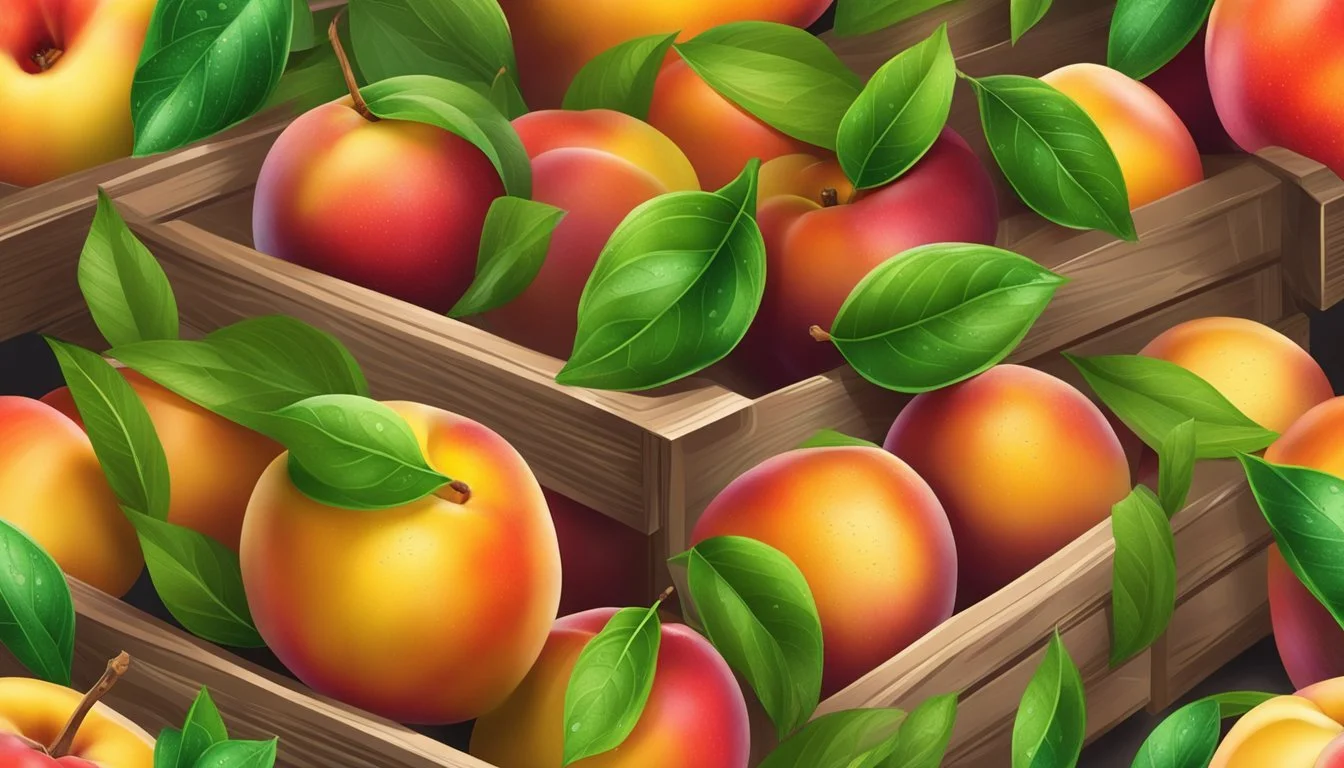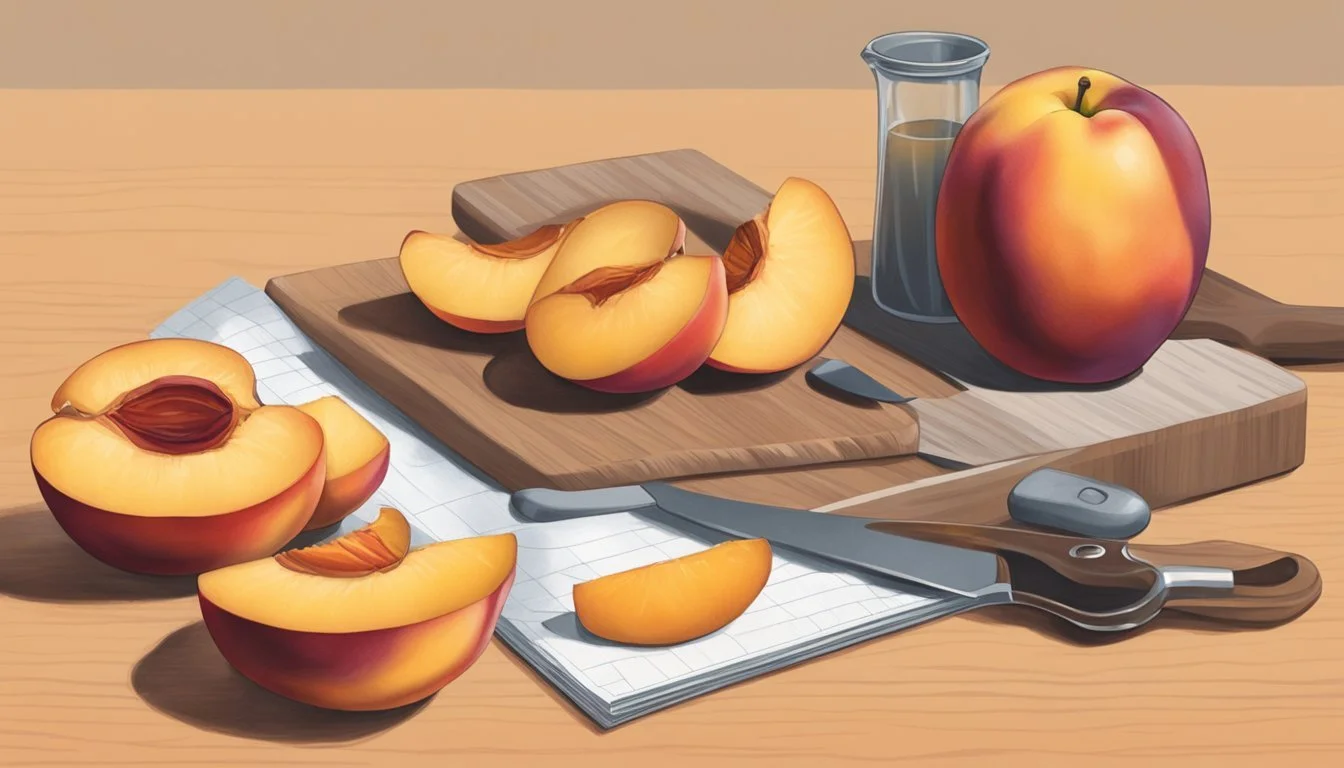Nectarines Substitutes
Top Alternatives for Every Recipe
Finding substitutes for nectarines can be paramount when you're short on these delicious stone fruits but don't want to miss out on their unique flavor and texture. Whether you’re baking a pie or stirring up a fresh salad, several fruits can step in to save the day. Apples, for instance, are a sweet and juicy alternative that can be found year-round and offer a crisp texture.
Nectarines and apricots are close relatives, making apricot puree a natural stand-in. This option maintains a similar texture and imparts a sweet, delicate flavor to your dishes. If you’re in need of a tangier profile, peaches are another excellent choice. Peaches share a similar juiciness and can be seamlessly swapped into recipes calling for nectarines.
Pluots, a hybrid of plums and apricots, offer an interesting twist. They deliver a flavorful punch that aligns well with that of nectarines, while their slightly varied texture brings a new dimension to your culinary creations. By having these substitutes on hand, you can continue crafting delicious recipes without compromise.
Understanding Nectarines
Nectarines are a delicious stone fruit known for their smooth skin, contrasting with the fuzzy skin of their close relative, the peach. They come in several varieties, mainly white and yellow, each offering unique flavors and textures.
Nectarines are rich in several essential nutrients. These fruits provide an excellent source of vitamin A and vitamin C, which contribute to their health benefits. They are also packed with antioxidants, which help combat oxidative stress.
When it comes to ripeness, the color and feel of a nectarine can be good indicators. Ripe nectarines should give slightly under gentle pressure and emit a fragrant aroma. The skin should be free from blemishes and have a vibrant color.
White nectarines tend to be sweeter than yellow varieties. The white varieties have less acidity and a more delicate flavor, making them ideal for fresh consumption. The yellow varieties, possessing a tangier taste, are often preferred for cooking and baking.
Here is a simple comparison:
Nectarine Type Flavor Profile Uses White Nectarines Sweet, Low Acidity Fresh, Desserts Yellow Nectarines Tangy, Bold Flavor Cooking, Baking
Nectarines derive their smooth skin from a recessive gene, making them distinct from peaches. This genetic variation results in the smooth skin characteristic that many people prefer.
In terms of health benefits, nectarines help boost the immune system, support skin health, and provide dietary fiber. Their nutrient content makes them a valuable addition to a balanced diet.
Choosing Nectarine Substitutes
Nectarine substitutes vary widely based on the specific needs of the recipe, such as matching flavor, aroma, texture, and consistency. Whether baking, cooking, or snacking, choosing the right substitute ensures that the dish maintains its desired characteristics.
Based on Flavor and Aroma
Peaches are a common substitute due to their similar sweet aroma and flavor profile. They share the same stone fruit category and can often be used interchangeably. Apricots offer a slightly more tart alternative but provide a pleasant aroma that complements many dishes.
Plums bring a unique mix of sweetness and tartness, making them suitable for various recipes such as tarts and cobblers. Mangoes, while more exotic, provide a perfect balance of sweet and sour highlights. Apples and pears also offer a different but subtle change in flavor, though their aroma is less distinct compared to nectarines.
Based on Texture and Consistency
Peaches have a smooth texture and juiciness similar to nectarines, making them an ideal substitute in most recipes. Apricots, while smaller, provide a comparable consistency but can be slightly more fibrous.
Plums and mangoes offer a juicy and tender flesh that mimics the softness of nectarines. Apples and pears, though not as juicy, can still be used in recipes where a firmer texture is acceptable. Their crispness can add a different but enjoyable mouthfeel in baked goods such as muffins and cakes.
For Specific Recipes
For pies and cobblers, peaches and plums are the best substitutes due to their ability to hold shape and provide juiciness. In tarts, apricots and mangoes bring a delightful sweetness and slight tartness that elevate the dish.
Cakes and muffins can benefit from the added sweetness and moisture of apples and pears. These fruits can be chopped finely or pureed to integrate seamlessly into the batter. When substituting in savory recipes, peaches and apricots can complement meats and salads with their nuanced flavors.
Fruit Substitutes for Nectarines in Dishes
When nectarines are out of season or unavailable, several fruits can effectively substitute for their sweet, juicy flavor in both salads and savory dishes. Key alternatives include apples, peaches, and apricots, each offering unique benefits.
Salads
Apples are a versatile option for fruit salads. They provide a sweet yet crisp texture, complementing other ingredients like greens and nuts. Use apples such as Honeycrisp or Fuji for added crunch. An added benefit is their availability year-round, making them an excellent substitute when nectarines are not in season.
Peaches share a similar sweetness and texture with nectarines, making them ideal for mixed green salads. The slightly softer flesh of peaches melds well with salad dressings, especially those with a vinaigrette base. Opt for yellow peaches for a flavor profile closest to nectarines. Both fresh and canned peaches work well in fruit salads.
Apricots, either fresh or dried, are another tasty alternative. Fresh apricots bring a tangy sweetness, while dried apricots offer a concentrated flavor. They pair well with creamy dressings and ingredients like cheese and nuts. When fresh apricots are not available, dried versions can still add a delightful burst of flavor.
Savory Pairings
Pork dishes benefit greatly from the use of fruits like pluots or peaches. Pluots, being a cross between plums and apricots, provide a complex flavor that enhances savory elements. They caramelize well when cooked, making them excellent for glazes and sauces.
Salsas made with peaches or apples offer a refreshing twist. Peaches have a similar texture to nectarines and meld seamlessly with ingredients like onions, peppers, and cilantro. For a crisper bite, try incorporating apples into the salsa. Choose tart varieties like Granny Smith for a balanced taste.
Chicken recipes can use pears as a nectarine substitute. Pears offer a slightly firmer texture and mild sweetness that work well with savory herbs. When roasted, they pair beautifully with poultry, adding a subtle fruity aroma.
These substitutions ensure that dishes remain flavorful and appealing, even when nectarines are not an option. They also provide a diverse range of textures and flavors, enhancing the culinary experience.
Non-Fruit Alternatives
When substituting nectarines, non-fruit substitutes provide a unique twist to recipes by altering texture, flavor, and even nutritional content. Below, we explore options like purees, sauces, and liquids that can seamlessly replace nectarines in various dishes.
Using Purees and Sauces
Applesauce is a versatile alternative with a sweet flavor profile that mimics nectarines, especially in baked goods. Its smooth texture integrates well into recipes for muffins, cakes, and even savory dishes.
Mango puree serves as another excellent substitute for nectarines. It offers a balance of sweetness and tartness, and pairs well with flavors such as lime or ginger. This puree can be used in smoothies, sauces, and desserts.
Apricot nectar can be a direct substitute in recipes calling for nectarine puree. Its slightly tangy flavor and liquid consistency make it suitable for dressings, marinades, and beverages. Moreover, apricot nectar retains the fruity essence necessary in many dishes.
Liquid Substitutes
In some recipes, adjusting the liquid content can emulate the moisture and zestiness of nectarines. Lemon juice provides a tangy zip and acidity that can brighten up flavors.
When a subtler flavor is desired, simple syrup can be used. This combination of water and sugar adds moisture without overpowering other tastes.
Apple juice can be employed to maintain the fruity aspect in beverages and some baked goods. Its mild sweetness and readily available nature make it a practical substitute. Adjust the quantity to ensure the consistency and moisture required in the recipe are met adequately.
Nectarine Storage and Handling
Proper storage and handling of nectarines are crucial to maintain their quality, extend their shelf life, and prevent mealiness. Here are the best practices for achieving these goals.
Optimum Storage Conditions
Nectarines should be stored based on their level of ripeness. Unripe nectarines need to ripen at room temperature, ideally between 65-75°F.
To speed up ripening, place them in a paper bag at room temperature. Once ripe, they should be stored at a slightly lower temperature, around 45°F, to preserve their texture and flavor.
Refrigeration of unripe nectarines can lead to mealiness, so only refrigerate fully ripe nectarines.
Extending Shelf Life
To extend the shelf life of nectarines, consider freezing them. Thoroughly wash and dry the nectarines, then blanch them in boiling water for about a minute to loosen the skins.
Plunge them into an ice bath, peel, and pit them before placing in airtight containers or freezer bags. Another method is storing them with proper separation and packaging to avoid bruising; this includes using paper towels to cushion and absorb excess moisture.
For ready-to-eat nectarines, handle them with care to avoid damage and store them away from ethylene-producing fruits like apples, which can accelerate ripening. Proper handling can preserve nectarines' taste and quality for an extended period.
Health and Nutritional Information
Nectarines are not just delicious; they offer vital nutrients that contribute to better digestion, skin health, and weight management. The nutrient profile and dietary considerations of nectarines are explored below.
Comparing Nutrient Profiles
Nectarines provide a variety of essential vitamins and minerals. A medium-sized nectarine generally contains:
Vitamin A: 9.4% of the Recommended Daily Intake (RDI), supporting skin health and vision.
Vitamin C: Approximately 8.5% of the RDI, which aids in immune function and collagen production.
Vitamin B3 (niacin): 6% of the RDI, essential for energy metabolism.
Nectarines are also a good source of dietary fiber. A 100g serving contains about 1.7g of fiber, aiding digestion and potentially helping in weight management. Furthermore, nectarines contain small amounts of antioxidants like lutein and zeaxanthin, beneficial for eye health.
Dietary Considerations
Nectarines are relatively low in calories and have a moderate amount of sugar. For those monitoring carbohydrate intake, nectarines have around 10g of carbohydrates per 100g, with approximately 9g being net carbs. This makes them suitable for most diets including those focused on weight management.
The fiber content in nectarines promotes better digestion and helps maintain gut health. Nectarines are also hydrating due to their high water content, contributing to better skin health. Including nectarines in a balanced diet can offer various health benefits without significant dietary downsides.
Nectarines provide essential nutrients while being delicious and versatile, making them a beneficial addition to many diets.
Understanding the Science of Substitution
Substituting nectarines involves more than just finding a similar fruit. The flavor and texture of the replacements must be taken into account to match the original fruit closely.
Flavor profiles vary significantly between fruits. Nectarines are known for their sweet, slightly tangy flavor. Peaches are closely related and have a similar taste, making them a natural alternative.
The texture of nectarines, which can be freestone or clingstone, also matters. Freestone nectarines have flesh that easily separates from the pit, while clingstone varieties have flesh that clings to the pit. This factor affects how they can be used in recipes.
Apples are a good substitute when ripeness and juiciness are considered. They come in various types, some sweet and some tart, allowing for a tailored match. They also have a crisp texture, contrasting the softer nectarine texture but providing a satisfying crunch.
Genetic and species relations play a role too. Nectarines and peaches come from the same species, making their substitution more seamless. They both belong to the Prunus persica family, allowing for a more exact match in ripening periods.
A quick comparison:
Fruit Flavor Texture Ripening Season Nectarine Sweet, slightly tangy Smooth, firm Late spring to late summer Peach Sweet, slightly tangy Fuzzy skin, firm Late spring to mid-summer Apple Sweet to tart Crisp Year-round
These subtle differences determine how effective one fruit can replace another in various culinary applications.






